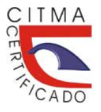Moringa aqueous extract as a biostimulant on ‘MD-2’ pineapple plants in acclimatization phase
Keywords:
Bioestimulant, Organic culture, Moringa oleiferaAbstract
Pineapple (Ananas comosus var. comosus) has a high demand in the international market. However, the organic cultivation development for this fruit is still limited. The use of biostimulants can be a viable alternative because it increases crops quality and yield. Moringa oleifera Lam., leaf extracts are assigned biostimulant activity due to their chemical composition. The aim of this work was to evaluate the effect of the moringa aqueous extract as biostimulant on the ‘MD-2’ pineapple in vitro plants in acclimatization phase. The kind of application (foliar, substrate and foliar + substrate), the effect of the dilution of the aqueous extract (dilutions 1:2, 1:4 and 1:8) and the effect of the frequency of extract application (7, 14 and 28 days) on pineapple plants were evaluated after 180 days in acclimatization phase. The greatest biostimulant effect was achieved with the foliar application and 1: 8 dilution of the moringa aqueous extract in the pineapple seedlings treated with respect to the rest of the treatments. Significant differences weren’t observed in morphological indicators for the application frequencies of aqueous extract which were evaluated.
Downloads
References
AMAR T, Ahmadi, T, PEI, S y CASEY, N (2015). The MD2 ‘Super Sweet’ pineapple (Ananas comosus). UTAR Agriculture Science Journal, Vol. 1, No. 4, pp. 14-17.
AOAC. (1995). Official Methods of Analysis. Ass. Off. Chem. 16 th Ed. Washington, D.C. USA.
ÁVILA, R. y RODRÍGUEZ, R (2019). Introduction and diversification of new pineapple cultivars in Ceballos Agroindustrial Enterprise. Cuba. Newsletter of the Workgroup Pineapple, International Society for Horticultural Science, No. 26, pp. 26-27.
ASHFAQ, M., BASORA, S. M. y ASHFAQ, U. (2012). Moringa: A Miracle Plant of Agro-forestry. Agric. Soc. Sci, Vol. 8, No 3, pp. 112-115.
BIOPLANTA (2018). Instructivo Técnico para la micropropagación de la piña. Subdirección de Escalado y Transferencia Tecnológica 3ra edición. Ciego de Ávila, Centro de Bioplantas, UNICA.
BONET PÉREZ, C…[et al.,] (2015). Régimen de riego del cultivo de la piña en la provincia Ciego de Ávila, Revista Ciencias Técnicas Agropecuarias, Vol. 24, No. 4, pp. 16-24.
ELZAAWELY, A.A. … [et al.] (2017). Enhancing growth, yield, biochemical, and hormonal contents of snap bean (Phaseolus vulgaris L.) sprayed with moringa leaf extract. Archives of Agronomy and Soil Science, Vol. 63, No. 5, pp. 687-699.
EMONGOR, V. E (2015). Effects of moringa (Moringa oleifera) leaf extract on growth, yield and yield components of snap beans (Phaseolus vulgaris). British Journal of Applied Science & Technology. Vol. 6, No. 2, pp. 114-122.
FAOSTAT (2022). Food and agriculture organizations of the United Stated Nations (FAOSTAT) Rome.
FERNÁNDEZ, V, SOTIROPOULOS, T y BROWN, P.H. (2013). Foliar fertilization: scientific principles and field pratices. Paris, France, International fertilizer industry association (IFA) ISBN: 979-10-92366-00-6.
FONSECA-VARGAS, R (2010). Fertilización mediante el método de Stroller en el cultivo de Piña (Ananas comosus) (L.) Merr. Híbrido MD-2, en la finca El Tremedal SA. San Carlos, Costa Rica. 81 h. Tesis en opción al grado de Licenciatura en Ingeniería en Agronomía. Instituto tecnológico de Costa Rica.
GARCÍA, I.I (2018). Árboles y arbustos para silvopasturas. Uso, calidad y alometría. En su: Origen, bondades y usos de Moringa oleífera, Lam: una revisión sistemática. Ed. Universidad e Tolima.
GRAU, A. (2009). El género Puya en la Argentina. Boletín de la Sociedad Argentina de Botánica, Vol. 44, No.1-2, pp. 175-208.
HALA, H. A y NABILA, A. E. (2017). Effect of Moringa oleifera Leaf Extract (MLE) on Pepper Seed Germination, Seedlings Improvement, Growth, Fruit Yield and its Quality. Middle East Journal of Agriculture. Vol. 6, No. 2, pp. 448-463.
HAYTOVA, D (2013). A review of foliar fertilization of some vegetables crops. Annual Research & Review in Biology. Vol. 3, No. 4, pp. 455-465.
HOSSAIN, M, AKHTAR, S y ANWAR, M (2015). Nutritional value and medicinal benefits of pineapple. International Journal of Nutrition and Food Sciences, Vol. 4, No 1, pp. 84-88.
IQBAL, M.A; SALEEM, A.M y AHMAD, B. (2015). Effect of seed invigoration techniques on germination and seedling growth of chinese sweet sorghum. Zenodo, Vol. 2, No 2, p. 1-4.
MURASHIGE, T y SKOOG, F. (1962). A revised medium for rapid growth and bio assays with tobacco tissue cultures. Physiologia plantarum, Vol. 15, No. 3, pp. 473-497.
PÉREZ-GÓMEZ, L. … [et al.] (2019). Efecto del extracto acuoso foliar de moringa en la fase inicial de aclimatización de piña. Cultivos Tropicales, Vol. 40, No 1, p. 10a - 10e.
REHMAN, H. … [et al.] (2017). Moringa leaf extract improves wheat growth and productivity by affecting senescence and source-sink relationship. International Journal of Agriculture & Biology, Vol. 19, No 3, pp. 479-484.
REGANOLD, J.P. y WACHTER, J.M. (2016) Organic agriculture in the twenty-first century. Nature plants, Vol. 2, No. 2, pp. 15221-15229.
RODRÍGUEZ-ESCRIBA, R.C. … [et al.] (2016). Efecto del déficit hídrico sobre cambios morfo-fisiológicos y bioquímicos en plantas micropropagadas de piña ‘MD-2’ en la etapa final de aclimatización. Cultivos Tropicales, Vol. 37, No 1, pp. 64-73.
ROUPHAEL, Y y COLLA, G. (2018). Synergistic biostimulatory action: Designing the next generation of plant biostimulants for sustainable agriculture. Frontiers in plant science, Vol. 9, p. 1-7. doi: 10.3389/fpls.2018.01655.
SANEWSKI, G.M, BARTHOLOMEW, D.P y PAULL, R. E. (2018). The pineapple: botany, production and uses. Queensland: CAB International. ISBN:9781786393319.
SEUFERT, V, RAMANKUTTY, N y FOLEY, J.A. (2012) Comparing the yields of organic and conventional agriculture. Nature, Vol. 485, No. 7397, pp. 229-234.
SHAFIE, F.A y RENNIE, D (2012). Consumer perceptions towards organic food. Procedia-Social and Behavioral Sciences, Vol. 49, pp. 360-367.
SHM, T. … [et al.] (2017). Influence of foliar application with moringa (Moringa oleifera L.) leaf extract on yield and fruit quality of Hollywood plum cultivar. J Hortic, Vol. 4, No 193, p. 1-7.
SINGH, K. … [et al.] (2018). Organic Farming for Sustainable and Nutritional Fruit Production in India: A Review. Int J Curr Microbiol App Sci, Vol. 7, No. 5, pp. 3033-3039; doi: 10.20546/ijcmas.2018.705.354.
TAIZ, L y ZEIGER, E. (2006). Fisiología vegetal. Barcelona: Universitat Jaume I. ISBN 10: 8480216018.
TOSCANO, S. … [et al.] (2018). Biostimulant applications in low input horticultural cultivation systems. Italus Hortus, Vol. 25, No.2, pp. 27-36.
VERAWUDH, J. (1993). Effects of micronutrients on growth, nutrients content in D-leaf, and yield of pineapple. Acta Horticulturae, Vol. 21, No. 334, pp. 241-246.
YAKHIN, O.I. … [et al.] (2017). Biostimulants in plant science: a global perspective. Frontiers in plant science, Vol. 7, pp. 1-32. doi: 10.3389/fpls.2016.02049.
YAMADA, Y, BUKOVAC, M. J. y WITTWER, S. H. (1964). Ion binding by surfaces of isolated cuticular membranes. Plant Physiology, Vol. 39, No 6, p. 978.
Downloads
Published
Versions
- 2024-03-07 (2)
- 2023-05-25 (1)
How to Cite
Issue
Section
License
Copyright (c) 2023 Universidad & ciencia

This work is licensed under a Creative Commons Attribution-NonCommercial-ShareAlike 4.0 International License.





















